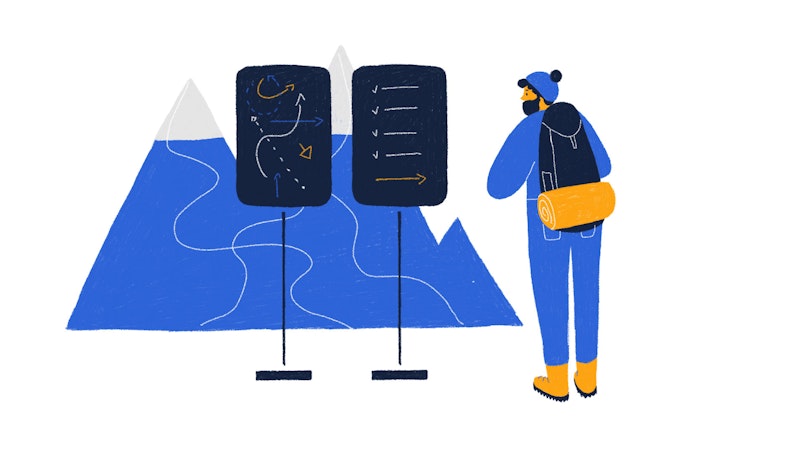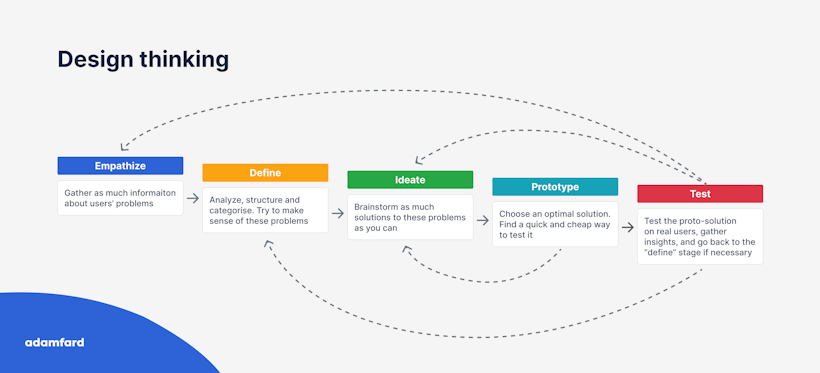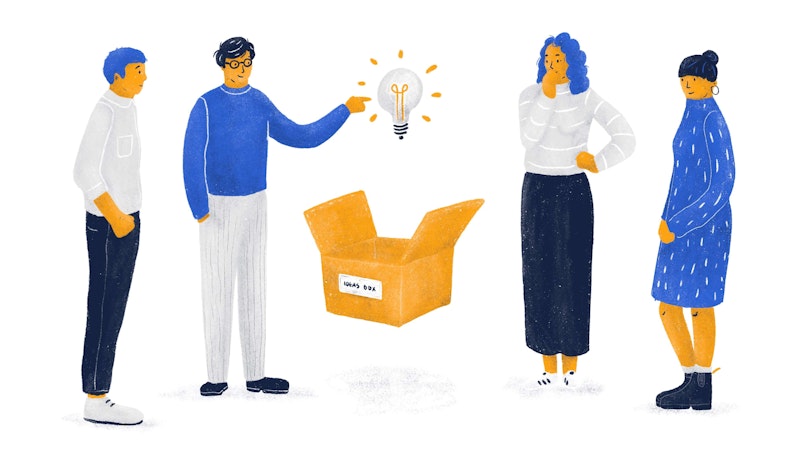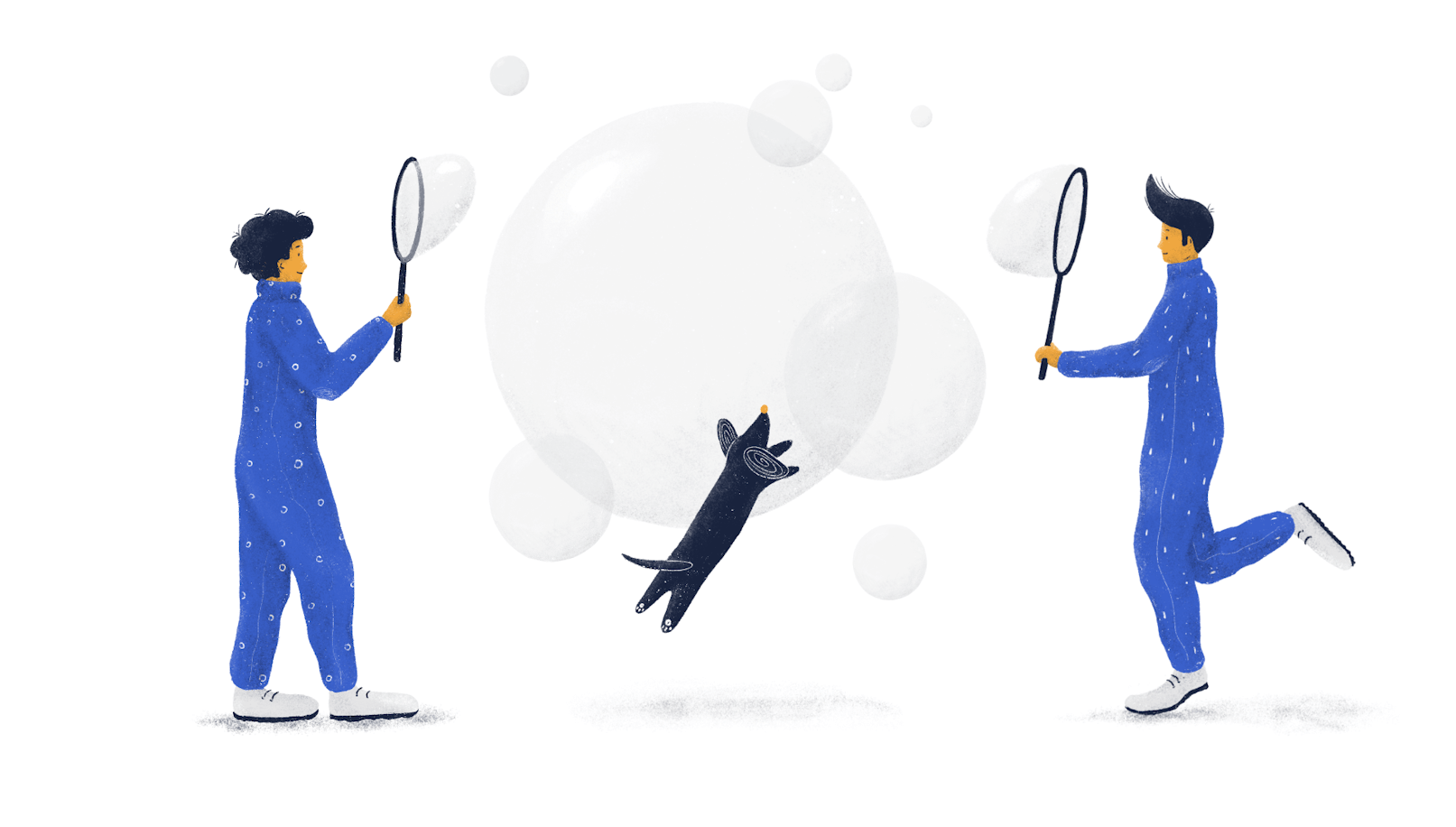To scale or not to scale — that is the question. This dilemma will often make it on startup founders’ agenda. Given that there are significant investments and risks involved, it’s never a straightforward question.
If a business happens to zero in on marketing and sales too early, it runs the risk of butchering the retention and adoption rates due to an incomplete product. On the other hand, scaling too late may prevent a product from seeing its user base and team grow organically.

Ready to scale?
Let us make your product future-proof through impeccable product design.
Contact usWe’re confident that a well-thought-out UX process and a good product team are essential for a startup’s successful scaling, with minimum risks involved.
Scaling the product
Growth is a process that should occur naturally in any product. It’s almost a default state most founders see their products in. Lack of growth is stagnation; therefore, it is a problem. On the other hand, a product that’s scaled prematurely is prone to failure. Most startups will find themselves between these two fires.
Very often, what primes products for unsuccessful scaling is the lack of idea validation. Going all-in on an idea that hasn’t been validated enough opens a business up to higher risks and forces it to gamble on its assumptions. Fortunately, there’s a simple solution to this conundrum — the Design Thinking framework. It’s a surefire way to create near-optimal solutions and prepare your product for scaling.

However, it’s important to underline that your analysis should go through all the stages of this model. Cutting corners will likely expose your thought process to too much guesswork. As a result, your product will scale alongside its problems.
An incomplete assessment of your users’ and the market’s needs will likely push a product onto the wrong path. Choosing to invest in a product’s or service’s marketing campaign before having a clear understanding of its direction may simply pour a substantial amount of resources down the drain.
Furthermore, this may put significant strain on your UX team, whose work is essential for the product’s adoption and retention rates. Think of it this way — by announcing a release date too early, you’re forcing your user experience specialists to deliver solutions that are poorly researched and tested. As a result, this opens your product up to not living up to its own promises.
Briefly on the Design Thinking framework
Now that we’ve briefly gone over the consequences startups face by not investing in a proper UX process, let’s touch on how products should be designed.
Don't be misled by the word "design". This is not a framework for designers. Design Thinking is a methodology for creativity and innovation, which is a priority to a much larger audience than UI&UX designers. It just so happens, that product designers are the demographic that tends to embrace design thinking principles the most.
With the disclaimer out of the way, let's talk about design thinking. Fundamentally, the Design Thinking process comprises 5 central steps that a team should follow:
Empathize
Define
Ideate
Prototype
Test
This framework provides us with a better understanding of how products should be created. More importantly, it emphasizes how detrimental it is not to focus on users and their needs.
The beauty of the Design Thinking framework is its simplicity and the sense of continuity that it creates. Let’s take a closer look:
Empathize is the first stage of the framework. Its goal is to ensure an in-depth understanding of the user and the things they do, say, think, and feel. Teams leverage this information to achieve a thorough understanding of the people they design for;
Define is the stage that comes after empathizing with the end-user. Teams use the data they’ve accumulated in the previous step and apply it to outline their needs, and explore the product’s opportunities for innovation;
Ideate is where a team starts exploring solutions. Now that you’ve gathered a good understanding of who the end-users are and the kind of problems they have to deal with, it’s time to brainstorm ideas. Ideally, there should be no limits or filters here — participants should be encouraged to explore the most creative and even far-fetched ideas. Quantity is over quality here. This process is followed by idea validation where the team selects one or a few ideas they choose to proceed with;
Prototype — now that you know your users, their problems, and you’ve generated a few good solutions for them, it’s time to start creating. Here, the goal is to create visual representations of our solutions.
Test — this is where you return to your potential users and show them what you’ve created, in order to address their problems. More likely than not, they’ll provide you with valuable feedback, which you’ll have to apply to your product again. UX design is an iterative process, and this is particularly where multiple iterations will occur. After a few cycles of prototyping and testing, you’ll end up with a product that your users are happy with, thus priming it for success;
Scaling the UX team
Once your product hits the market and starts gaining traction, it’s time to scale your UX team. This is most definitely one of the most important investments you’ll make into ensuring its success.
A larger design team is how you ship, validate, and experiment quickly and efficiently. While this sounds great, there are a few caveats you should take into account to make it work.
The first thing you should take a closer look at is the team’s workflow. It’s often the case that small startups will have but one designer who’s responsible for a vast spectrum of things. In cases like these, stuff like documentation, team structure, and rituals are left out.
In theory, there’s nothing wrong with that, and that’s the case for most up-and-coming businesses, but this can pose a serious threat to a scaling business.
Once your UX team starts growing, you’ll have to think about creating a sense of continuity and cohesion within it. However, very often, a startup won’t have anyone on the team that has a strong understanding of how a UX department should function and interact.
One of the ways to mitigate this problem is hiring consultants or designops specialists. These people are specialists that have faced the challenge you’re currently facing. Gaining access to their expertise is an invaluable investment that will safeguard you from a wide array of common pitfalls, allowing you to build an efficient team.
Once your business establishes a robust design workflow, it’s always a good idea to hire a DesignOps manager. This is a relatively new position, and its responsibilities revolve around the health of the design process, the people behind it, and the projects.
Essential UX team scaling facets
Scaling a UX team is a fairly demanding process that has many ins and outs. However, most of them can be boiled down to the following four central categories.
Team composition & structure
How many designers does a startup need? Generally speaking, most successful startups have a ratio of 1 designer per 4-5 developers. Additionally, from our personal experience, having at least one UX researcher per team will invariably help you make well-informed and data-driven product decisions.
The necessary amount of design specialists is fundamentally defined by the type of product you’re developing. For instance, Airbnb has about 70 designers on board, but it’s safe to say that not all products need as many.
One way you can determine the size of the team you need is by outlining the scope of the project. This outline will encompass the entire spectrum of work that needs to be delivered within the design department. It’s best to have a seasoned UX professional do this. Then, you can allocate each part of the scope to every seat in the design team.

Collaboration
The way your UX team will interact and collaborate is an essential part of its success. This is where startups define the rituals that will guide and govern the team’s activity.
A few important questions that startups need to answer to define design collaboration are:
What rituals are we going to establish to keep the design team up and running?
How are we going to ensure open and honest feedback?
How are we going to work together as a team, rather than a group of solo designers?
This might seem trivial, but not answering these questions can seriously hamper efficiency and lead to frustration.

Culture
Design, in its broadest sense, should be a company’s backbone. A designer’s mindset includes things like experimentation, being on the lookout for inspiration everywhere you can, creativity in problem-solving.
This does not mean that everyone from HR to the QA should be part-designers as well. Rather, that design as a problem-solving philosophy should govern a company’s approach to work. Therefore, establishing a designer mindset and empowering teams with a good understanding of design techniques such as workshops will work wonders.

Tools & systems
Software is an essential part of a modern workplace. Designers are no exception. This is yet another aspect of a team’s work that will help introduce continuity and cohesion in a UX department’s collaboration.
Ensuring that everyone uses and has access to the same tools, guidelines, and documentation, is how you ensure consistency within your team.
It’s essential to ensure that all the tools used within your company are compatible with each other, allow efficient collaboration, and just fit in your workflow.

Conclusion
Design drives innovation, which is why companies that invest in UX and have robust user-driven processes have a significant advantage on the modern market.
However, it’s vital to underline that while being beneficial, user experience needs a solid foundation to grow on. Every business has the opportunity to flourish; the crucial factor here is to have a well-thought-out set of principles and processes in place.





